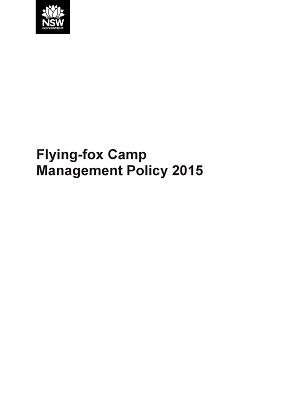Level 2 management actions should not be carried out with the aim of killing, harming or dispersing/disturbing flying-foxes.
Plans for creating buffers should be developed as part of a camp management plan using the Camp management plan template (DOC 355KB), and you may need a licence.
Creating buffers may include:
- Trimming or clearing vegetation at the camp boundary to create a buffer between the flying-fox camp and areas of human settlement. The removal of a whole tree that poses a genuine health and safety risk (as determined by a qualified arborist) may constitute a Level 1 management action.
- Revegetating areas between the flying-fox camp and areas of human settlement with plants that are unsuitable roost habitat.
- Extending roosting habitat by revegetating away from areas of human settlement. If flying-foxes are not using the area to be revegetated this could be considered a Level 1 management action.
- Disturbing animals at the boundary of the camp to encourage roosting in nearby vegetation.
This page gives more information about creating buffers and should be read in conjunction with the Flying-fox Camp Management Code of Practice 2018 and Flying-fox Camp Management Policy 2015 (PDF 200KB).



